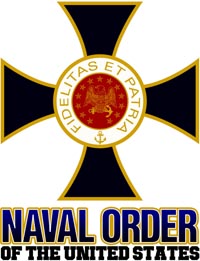News & Tall Tales. 1800s.

Our Crowded Harbor
Tuesday Morning, August 13, 1850, Daily Alta California, San Francsico
Our harbor is now literally crowded with ships, and but a very indefinite idea of their number can be obtained from the city. To course through them, from Clark s to Rincon Point, to take a position out in the harbor a view them altogether is the only way. The coup d oeil is most superb, and the bosom of a San Franciscan cannot fail to swell with pride at the evidence of the commercial importance of his city.
Steamboat navigation is increasing with great rapidity, and every few days some new and elegant craft, propelled by that wind-defying power, steam, glides through the waters of the bay, parting them as if in scorn and defiance. It is a source of much satisfaction to witness such enterprise, and we hail every fresh evidence of its existence with renewed gratification. It is to be regretted that greater facilities are not afforded, however, to the steamboats plying in our bay, by keeping open free and abundant ways of ingress and egress to their berths. At the present time, wharf accommodations are so inadequate that it is very essential that the utmost facilities should be afforded the steamers to approach those that extend a sufficient distance, without the danger of staving themselves to pieces or carrying away any portion of the ships rigging. As it is, a steamer having her berth at Central wharf has the utmost difficulty in getting outside.
This could be easily remedied, and it is the duty of the Harbor Master to see that those ships which are in the way be hauled so as not to interfere with the daily movements of the steamers. The ships remain stationery for weeks at months in their berths, while the steamer are perpetually passing and repassing. Another bar exists in the numerous piles driven down in all directions by persons having water lots or claiming to have, which are quite as dangerous to the small craft as snags. We hope that this matter will be looked to, both by the Harbor Master and the Council. The spirit of enterprise among the steamboat builders should be fostered and encouraged, as one of the greatest importance to our commercial interests, by bringing us into closer connection with our flourishing and prosperous river towns and cities.
The Authority to Sail: The History of U.S. Maritime Licenses and Seamen's Papers
Robert Stanley Bates, George Marsh (Editor), John F. Whiteley (Forward) (Batek Marine Publishing, 2011; Nominated in 2012 for a Pulitzer Prize)
This book depicts important aspects of our maritime history as a result of original research done by the author, Commodore Bates, the holder of an unlimited master's license who has enjoyed a distinguished fifty-year career in both the Coast Guard and the American Merchant Marine.
The U.S. Coast Guard issues all Captain Licenses for U.S. Ports.
Note: Other countries have different regulations, i.e. the RYA (Royal Yachting Association), conducts certification for Britain and Ireland. As of 2011, they did not recognize the USCG certification; certification through their courses was required.Master Unlimited is a licensed mariner in ultimate command of a vessel any gross tons. The captain is responsible for its safe and efficient operation, including cargo operations, navigation, crew management and ensuring that the vessel complies with local and international laws. All persons on board, including officers and crew, other shipboard staff members, passengers, guests and pilots, are under the captain's authority and are his or her ultimate responsibility. The STCW defines the Master as Person having command of the ship.
The Sea Chart
The Illustrated History of Nautical Maps and Navigational Charts
John Blake
The sea chart was one of the key tools by which ships of trade, transport and conquest navigated their course across the oceans. Herein is a history and development of the chart and the related nautical map, in both scientific and aesthetic terms, as a means of safe and accurate seaborne navigation. 150 color illustrations including the earliest charts of the Mediterranean made by 13th-century Italian merchant adventurers, as well as 18th-century charts that became strategic naval and commercial requirements and led to Cook's voyages in the Pacific, the search for the Northwest Passage, and races to the Arctic and Antarctic.
Get Your Captain's License. Fifth Edition
Charlie Wing
Considered the quickest, easiest, and least expensive way to prepare for the U.S. Coast Guard captain's ratings exams required for anyone who takes paying passengers on a boat, and useful for serious boaters who want to save money on insurance. 350 pages of seamanship and navigation tutorials. More than 1,500 questions and answers from the Coast Guard exams. Includes an interactive CD-ROM with all 14,000 questions and answers in the USCG database, so you can take an unlimited number of practice exams

The Naval Order of the United States has a history dating from 1890. Membership includes a wide range of individuals, many with highly distinguished career paths.
The San Francisco Commandery meets the first Monday of each month at the San Francisco Italian Athletic Club in San Francisco, California and holds two formal dinners each year.


 Copyright ~ 1998-2018.
Copyright ~ 1998-2018. 